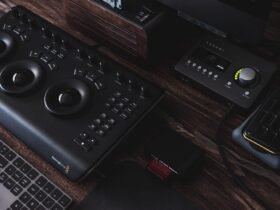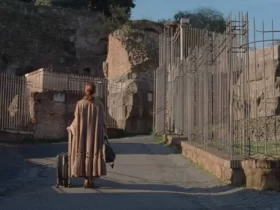If you love taking instant photos, you might have heard of the FUJIFILM INSTAX MINI 11, a popular camera that prints mini photos on the spot. But did you know that there are other options that offer different features, sizes, and styles? In this article, I will show you the top three alternatives to the FUJIFILM INSTAX MINI 11 and why you might want to try them out. Whether you are looking for a classic Polaroid, a digital hybrid, or a portable printer, there is an instant camera for you. Let’s take a look at these amazing devices and how they can make your photo-taking experience more fun and creative.
1. FUJIFILM INSTAX MINI 12

If you are looking for a fun and easy way to capture and print your memories instantly, you might be interested in the FUJIFILM INSTAX MINI series of instant cameras. These cameras use the popular Instax Mini film format, which produces credit card-sized prints that develop in around 90 seconds. But which model should you buy: the new Instax Mini 12 or the previous Instax Mini 11? Let me share why the FUJIFILM INSTAX MINI 12 is an ideal alternative to the FUJIFILM INSTAX MINI 11.
Film Format:
Having shot extensively with both the Instax Mini 12 and the Instax Mini 11, I can confirm they both use the same FUJIFILM Instax Mini instant film. This film comes in packs of 10 exposures and has a photo picture size of 62mm x 46mm. The ISO rating of 800 has always allowed me to shoot both indoors and outdoors. The white border of the film is my personal canvas for adding notes or decorating with stickers. Over the years, I’ve experimented with various Instax Mini film types, like monochrome and mermaid tail, among others.
Image Quality:
Your photo’s outcome largely relies on the light conditions and exposure settings. Both cameras have this automatic exposure control system that I’ve found to be quite reliable. However, where the Mini 12 shines is its upgraded flash, which gives more even illumination, and the parallax correction feature in its viewfinder. These features ensure my close-ups look better and my framing is accurate.
Camera Size and Style:
While using them, the Mini 12 and the Mini 11 feel closely similar, but with distinctions. The Mini 12, at 122x104x66.6mm and 306g, has this “inflatable-style” design I’ve come to appreciate. It’s slightly different from the Mini 11, which weighs 293g and measures 121.2×107.6×67.3mm. As for the colors, the pastel shades of the Mini 12, especially Pastel Blue and Blossom Pink, have become my favorites.
Lens and Focus:
Both have a 60mm f/12.7 lens, with focus ranging from 0.3m to infinity. But it’s the Mini 12’s new twist mechanism that’s truly impressive – just a twist for both power and lens extension, and another twist for close-ups. It feels much more intuitive than the Mini 11’s button mechanism.
Battery Type and Life:
Powered by two AA-size alkaline batteries, both cameras offer a battery life sufficient for about 10 film packs (10 shots each). However, during my sessions, I’ve noticed the Mini 12’s batteries seem to deplete slightly faster. This might be due to its improved flash or printing mechanism.
Additional Features:
Several features have enhanced my shooting experience. The built-in selfie mirror is a savior for self-portraits. The high-key mode has been a creative tool for me, producing those ethereal, bright photos. And yes, the Mini 12’s quicker printing speed, reducing from 12 seconds to 9 seconds, means less waiting time for my prints.
Price:
Price-wise, both the Mini 12 and Mini 11 retail at $69.95 in the US. Being in the field for so long, I often find deals on either model. But remember, you’ll need to account for the film cost, which typically ranges from $0.70 to $1 per print.
2. FUJIFILM INSTAX MINI 40

Having spent considerable time with instant cameras, the FUJIFILM INSTAX MINI 40 has caught my attention as a worthy alternative to its predecessor, the INSTAX MINI 11. Let me dive into the details:
Film Format:
Both the MINI 40 and the MINI 11 use the same FUJIFILM instax mini instant film, producing credit card-sized photos of 62mm x 46mm. The film’s glossy surface and vibrant colors develop in roughly 90 seconds.
Image Quality:
Quality matters. While both have an automatic exposure function adjusting to ambient light, the MINI 40’s aperture range of f/5.6 to f/14.5 allows for capturing more light, especially in low-light scenarios, compared to the MINI 11’s f/12.7.
Camera Size and Style:
The MINI 40’s classic black body with silver accents is a departure from the MINI 11’s colorful variety in blush pink, sky blue, charcoal gray, ice white, and lilac purple. In terms of size, the MINI 40 measures 104mm x 121mm x 65mm and weighs 330g, while the MINI 11 stands at 107.6mm x 121.2mm x 67.3mm and 293g.
Lens and Focus:
Both cameras come with a 60mm focal length lens. However, the MINI 40 features a manual focus system to switch between normal (0.3m and beyond) and selfie mode (0.3m to 0.5m). The MINI 11, on the other hand, boasts an automatic focus system. And, both have that essential selfie mirror on the lens cover.
Battery Type and Life:
Each camera operates on two AA-size alkaline batteries (LR6). However, the MINI 40’s battery life allows for 10 instax mini film packs (totaling 100 exposures). In comparison, the MINI 11 can snap about 100 shots.
Additional Features:
Both cameras share features like the film counter, film pack confirmation window, flash charging lamp, AE light sensor, and strap eyelet. The MINI 40 also adjusts flash output with its light sensor. Meanwhile, the MINI 11 allows for personalization with two interchangeable shutter button accessories.
Price:
A crucial factor for many: The MINI 40 is priced at $99.95 in the US, higher than the MINI 11’s $69.95. This price difference seems to cater to the differing target markets: the MINI 40 aiming for a mature audience, while the MINI 11 targets the more playful ones.
3. Lomography Lomo’Instant

I’ve always believed that capturing memories is an art. As someone who’s deeply passionate about photography, I’ve explored numerous cameras, and two models have genuinely caught my eye: the Lomography Lomo’Instant and the FUJIFILM INSTAX MINI 11. Let’s delve deeper into why I consider the Lomo’Instant a worthy alternative to FUJIFILM INSTAX MINI 11.
Film Format:
Both these gems utilize the Fujifilm Instax Mini film, yielding credit card-sized treasures with an exposure area of 62mm x 46mm. Their white-bordered prints offer a canvas for personal touches, and you’ll find the film easily available in packs of 10 or 20 sheets.
Image Quality:
In my hands-on experience, the Lomo’Instant’s 27mm f/8 lens (35mm equivalent) often captured more of a scene and shone brighter in low-light conditions compared to the MINI 11’s 60mm f/12.7 lens. The Lomo’Instant offers a flexible shutter speed range from 8s to 1/250s, granting me more artistic control, especially when juxtaposed with the MINI 11’s fixed 1/250s.
.Flashes can be lifesavers in dark settings. The Lomo’Instant has a guide number of 9 (m), and its flash can be adjusted. More intriguingly, it comes with four colored gel filters for different mood effects. The MINI 11, while featuring an effective flash range of 0.3 to 2.7m, operates on an automatically adjusting flash system.
Camera Size and Style:
The Lomo’Instant, with its 107.6mm x 121.2mm x 67.3mm dimensions and 293g weight (sans batteries, strap, and film), emanates a classic rangefinder aura. Its diverse color palette, ranging from white to Marrakesh, has something for everyone. Conversely, the modern-looking MINI 11, bearing the same measurements and weight, comes in five pastel shades including ice white and lilac purple.
Lens and Focus:
The Lomo’Instant brings to the table three focus settings, easily switched by rotating the lens barrel. Furthermore, it’s equipped with three lens attachments: fisheye, portrait, and close-up, offering varied photographic flavors. The MINI 11, though lacking these extensions, does sport a selfie mode that optimizes focus and brightness for self-portraits.
Battery Type and Life:
Running on four AA-size alkaline batteries, the Lomo’Instant promises longevity up to approximately 10 Instax Mini film packs of 10 exposures each. The MINI 11, drawing power from two AA batteries, offers a similar lifespan. Both cameras’ auto power-off feature after five minutes is a testimony to their battery conservation.
Additional Features:
This is where the Lomo’Instant truly sets itself apart. Its bulb mode for capturing up to eight-second long exposures, multiple exposure mode for layering shots, PC sync socket for external flashes, remote control lens cap, and a tripod mount make it a versatile companion. The MINI 11, although lacking these specific features, offers customization with its shutter button accessories and is compatible with a range of Instax Mini add-ons.
Price:
Financially speaking, the Lomo’Instant’s white edition sits at $99, inclusive of the three lens attachments. Its other editions, such as Sanremo at $129, come with additional attachments. The MINI 11, uniformly priced at $69.95 across colors, includes the camera, two shutter button accessories, and a matching hand strap, with the film sold separately.











Got a Question?
Find us on Socials or Contact us and we’ll get back to you as soon as possible.